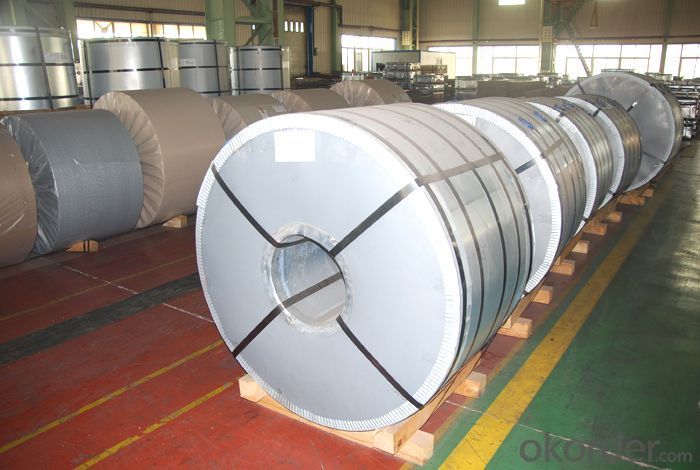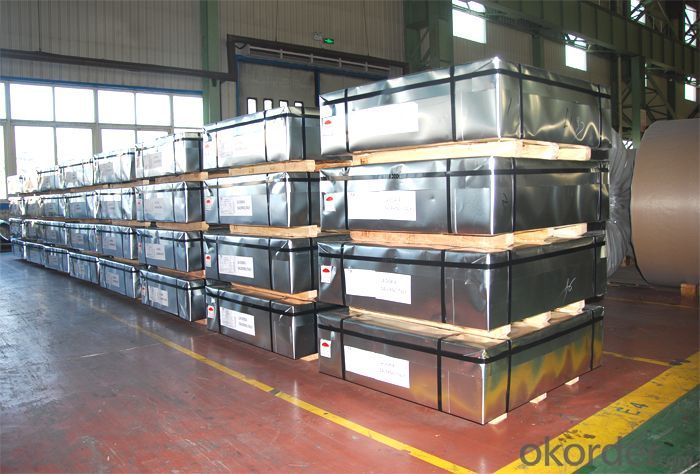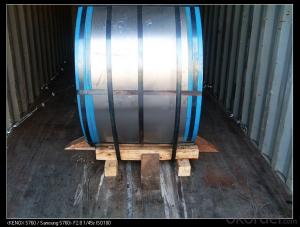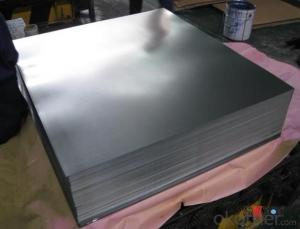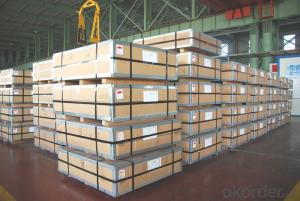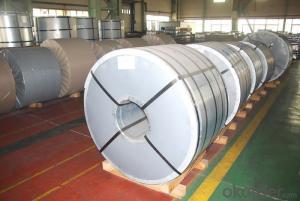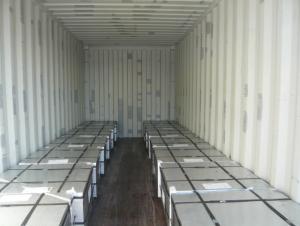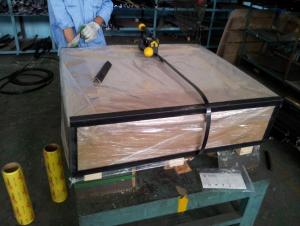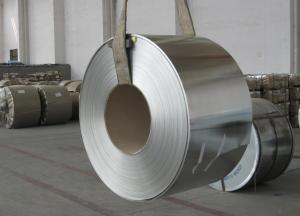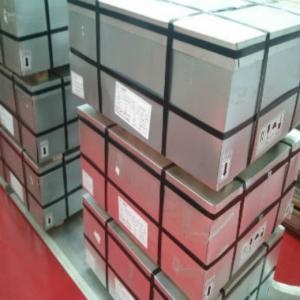Tinplate for Metal Packing ETP sheet Coils
- Loading Port:
- Shanghai
- Payment Terms:
- TT OR LC
- Min Order Qty:
- 100 m.t.
- Supply Capability:
- 40000 m.t./month
OKorder Service Pledge
OKorder Financial Service
You Might Also Like
Structure of Tinplate for Metal Packing ETP sheet Coils Description
| Steel Type | MR | ||
| Temper(BA&CA) | T1~T5, DR8, DR9 | ||
| Coating | 1.1~11.2g/m2 (Both Equal and Differential) | ||
| Thickness and tolerance | 0.15~0.50mm(Tolerance: _+0.01 mm) | ||
| Width & tolerance | 300~1000mm (Tolerance: 0~3mm) | ||
| Cut length & tolerance | 450~``50mm (Tolerance: 0~3mm ) | ||
| Coil inside diameter | 420/508mm | ||
| Coil Weight | 3~10 MT | ||
| Passivation | 311 | ||
| Oiling | DOS | ||
| Surface Finish | Bright, Stone, Silver, Matte | ||
| Packaging | Seaworthy Standard with wooden pallet | ||
| Standards Available | GB/T2520, JIS G3303, ASTM A623M & EN10202 | ||
| Special specitications are available on request. | |||
Main Features of theTinplate for Metal Packing ETP sheet Coils
Tinplate can ensure food hygiene and minimize the possibility of corruption, effectively
prevent the danger to health, but also in line with modern convenience in tinplate packaging
of canned food diet, rapid demand, tea packaging, coffee packaging, health careproduct
packaging, candy wrappers, cigarette packaging, gift packaging, food packaging containers
are preferred.As well as other miscellaneous cans of the oils and fats cans, chemicals
cans, beverage cans, spray cans, and and so on on.
Tinplate for Metal Packing ETP sheet Coils Images
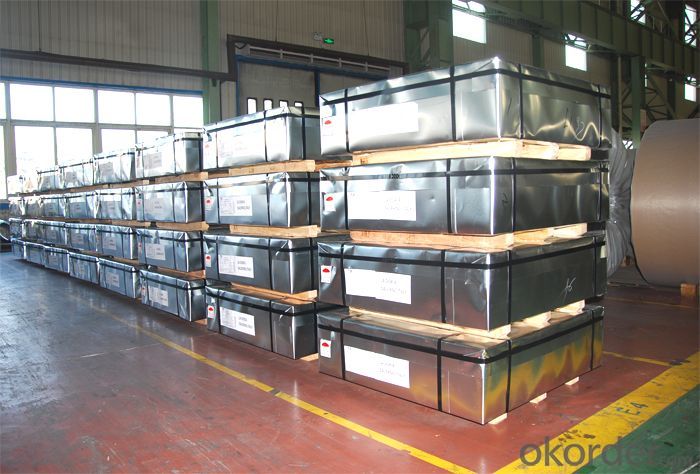
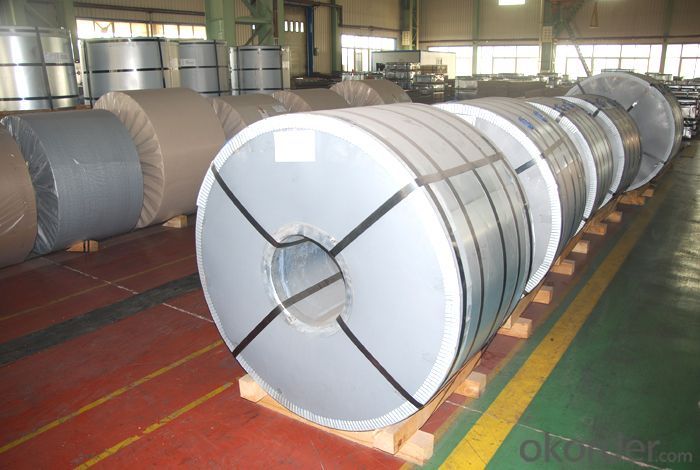
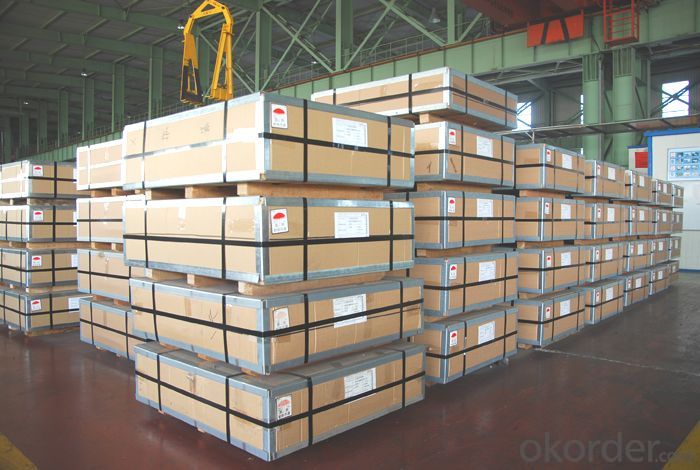
Tinplate for Metal Packing ETP sheet Coils Specification

FAQ of Prime 2.8/2.8 EPT Sheets Coils TinPlate For Cans Making
How long does it take to get the product if i place an order?
With the process of your requirements,we will pack and deliver in 3-7 days.If it is by sea shipment,it will take 15-45 days depending on different locations.
- Q: How is tinplate used in the manufacturing of electronic devices?
- Tinplate is commonly used in the manufacturing of electronic devices for its corrosion resistance and excellent conductivity. It is often utilized as a coating material for printed circuit boards (PCBs) to protect them from oxidation and enhance their durability. Additionally, tinplate is utilized in the production of connectors, switches, and other electrical components due to its ability to facilitate smooth electrical flow and ensure reliable performance.
- Q: What are the common applications of tinplate?
- Tinplate is commonly used for packaging food and beverages, such as cans for canned goods, metal caps for bottles, and metal containers for various products. It is also used for making aerosol cans, paint cans, and decorative tin boxes for storage purposes. Additionally, tinplate is used in the manufacturing of electronic components, automotive parts, and construction materials due to its corrosion resistance and durability.
- Q: What are the benefits of using tinplate for pharmaceuticals?
- There are several benefits of using tinplate for pharmaceuticals. Firstly, tinplate is highly resistant to corrosion, ensuring the integrity and safety of the pharmaceutical products. Secondly, tinplate provides a reliable barrier against moisture, oxygen, and light, thereby preserving the quality and extending the shelf life of the medications. Additionally, tinplate is a sustainable packaging material that is easily recyclable, reducing the environmental impact of pharmaceutical packaging. Lastly, tinplate is lightweight and durable, making it convenient for transportation and storage of pharmaceutical products.
- Q: What are the disadvantages of using tinplate?
- One disadvantage of using tinplate is its relatively high cost compared to other materials. Additionally, tinplate can be prone to corrosion if not properly coated or maintained. It is also less flexible than some alternative materials, making it less suitable for certain applications. Lastly, tinplate can be challenging to recycle due to the complexity of separating the tin coating from the steel, which can contribute to environmental concerns.
- Q: What is the difference between tinplate and tin-free steel?
- Tinplate is a type of steel coated with a thin layer of tin, which provides corrosion resistance and enhances its appearance. On the other hand, tin-free steel refers to steel that does not have a tin coating, making it more cost-effective but also less resistant to corrosion.
- Q: What are the food safety regulations for tinplate packaging?
- Food safety regulations for tinplate packaging vary depending on the country and region. However, some common regulations include ensuring that the tinplate is food grade and does not contain harmful chemicals or substances that can transfer to the food. Additionally, proper sterilization and hygiene practices during the manufacturing process are essential to prevent contamination. Food safety regulations also often require the use of protective coatings or linings on the tinplate to prevent reactions with the food and to maintain its quality and safety. Regular testing and monitoring of tinplate packaging are also important to ensure compliance with these regulations.
- Q: How does tinplate contribute to the reduction of carbon emissions?
- Tinplate contributes to the reduction of carbon emissions through its recyclability and lightweight nature. As tinplate is made from steel, it can be easily recycled, reducing the need for new production and saving energy. Additionally, tinplate's lightweight properties make it more fuel-efficient during transportation, resulting in lower carbon emissions throughout its lifecycle.
- Q: What are the different ways to seal tinplate cans?
- There are several methods to seal tinplate cans. Some common ways include double seaming, soldering, welding, adhesive bonding, and using plastic or metal caps with sealing compounds. Each method has its own advantages and is chosen based on factors such as the type of product being packaged, desired shelf life, cost, and production requirements.
- Q: Raw material for zinc clad sheet? Can zinc clad plate replace tinplate?
- Zinc is very active, outdoor corrosion is the surface after the formation of Zinc Oxide, do you dare to drink drinks containing Zinc Oxide, you see, you can replace the tinplate?
- Q: What are the advantages of using tinplate for beverage cans?
- Tinplate offers several advantages for beverage cans, including its excellent resistance to corrosion, its ability to maintain the freshness and taste of the beverage, its high strength-to-weight ratio, its ease of recyclability, and its cost-effectiveness.
Send your message to us
Tinplate for Metal Packing ETP sheet Coils
- Loading Port:
- Shanghai
- Payment Terms:
- TT OR LC
- Min Order Qty:
- 100 m.t.
- Supply Capability:
- 40000 m.t./month
OKorder Service Pledge
OKorder Financial Service
Similar products
Hot products
Hot Searches
Related keywords


